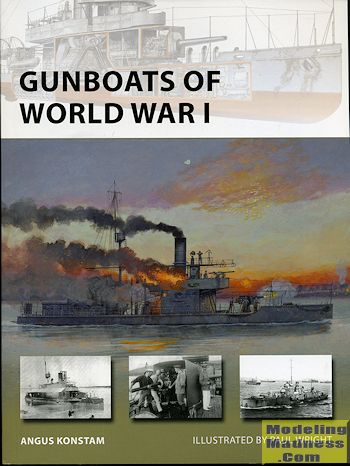 Gunboats
have had several purposes over the years. One was for coastal defense. These
little ships would be able to sortie out to break up invasions or even to assist
in battling enemy fleets. They did not need a lot of range and were generally
armed a lot more than you would expect from what was a small ship. Of course, there were a variety of sizes to these ships with some having quite good range and even some accommodations on board (for the officers) when it looked like they would be away for a relatively long period of time.
Gunboats
have had several purposes over the years. One was for coastal defense. These
little ships would be able to sortie out to break up invasions or even to assist
in battling enemy fleets. They did not need a lot of range and were generally
armed a lot more than you would expect from what was a small ship. Of course, there were a variety of sizes to these ships with some having quite good range and even some accommodations on board (for the officers) when it looked like they would be away for a relatively long period of time.
They were also useful when operating in rivers as their shallow draft
was such that they could go where larger ships could not. In this regard, they
were very helpful in areas where movement of armies generally followed these
waterways.
Another use was for bombarding enemy positions in coastal locations. The
ships that did this task were frequently called Monitors (after the USS Monitor
of US Civil War fame). These ships were armed with very large guns for their
size and often they were used for coastal defense as well. While some monitors
were towed, the ones that fit into the category of this book were powered. In
fact, it was during this time when the line between gunboat and monitor were
frequently blurred.
Initially the largest operator was the Royal Navy. Great Britain was in
their maximum empire mode in the late 1800s and prior to WWI. Yet after
the HMS Dreadnought was launched, the First Sea Lord, Sir John Fisher, decided
that these sorts of ships were no longer useful and either sold or mothballed
dozens of these vessels.
So the Royal Navy went into WWI with little to show in terms of these
small boats. Naturally, it had to build more as it was realized the folly of
removing them from the fleet.
This book looks at those ships of the warring powers, their design,
their wartime operations, and their armament. While considerable space is taken
on the their specs and design, to me the most interesting part was their
operations. This ranged from river ops in Mesopotamia, where they were decisive
in battles against the Turks, to their operation on Lake Tanganyika in Africa,
as well as their operation as bombardment vessels in both the Gallipoli campaign
and against German positions along the Channel coast of Belgium.
Throughout the book are some superb period photos, all of this enhanced
by the artwork of Paul Wright, who provides some stirring images. In the last
parts of the book are specifications of the major types that were covered,
including ships from Austria-Hungary, Germany, Great Britain, the United States
and Turkey to name a few. It all makes for a fascinating look at a ship type
that is often overlooked by history, but nonetheless important in its successes.
Highly recommended.
April 2015
For more on the complete line of Osprey books,
visit http://ospreygrp.com. In the US, it is
Osprey Direct at 44-02 23rd St, Suite 219, Long Island City, NY 11101., where you can
get a catalogue of available books.
If you would like your product reviewed fairly and
fairly quickly, please
contact
the editor or see other details in the
Note to
Contributors.
 Gunboats
have had several purposes over the years. One was for coastal defense. These
little ships would be able to sortie out to break up invasions or even to assist
in battling enemy fleets. They did not need a lot of range and were generally
armed a lot more than you would expect from what was a small ship. Of course, there were a variety of sizes to these ships with some having quite good range and even some accommodations on board (for the officers) when it looked like they would be away for a relatively long period of time.
Gunboats
have had several purposes over the years. One was for coastal defense. These
little ships would be able to sortie out to break up invasions or even to assist
in battling enemy fleets. They did not need a lot of range and were generally
armed a lot more than you would expect from what was a small ship. Of course, there were a variety of sizes to these ships with some having quite good range and even some accommodations on board (for the officers) when it looked like they would be away for a relatively long period of time.